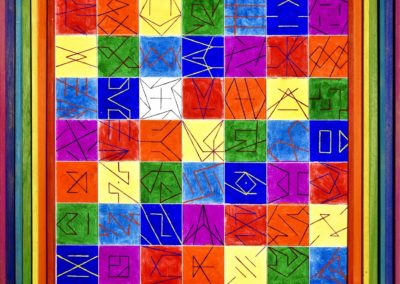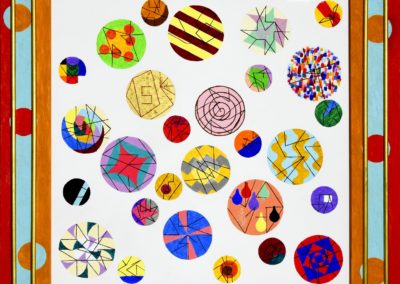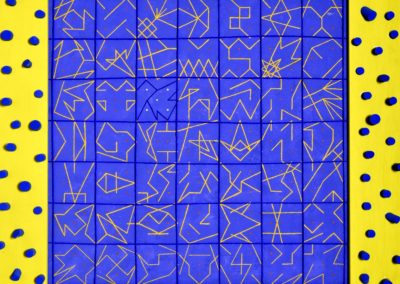SILVIO DI PIETRO was born in Campobasso, where he still lives and works, in 1952. Graduated in industrial chemistry at the University of Bologna, after having held positions of responsibility at some ceramic and pharmaceutical companies, he decided to return to his hometown, undertaking a career as a teacher....READ MORE ↴
Silvio Di Pietro was born in Campobasso, where he still lives and works, in 1952.
Graduated in industrial chemistry at the University of Bologna, after having held positions of responsibility at some ceramic and pharmaceutical companies, he decided to return to his hometown, undertaking a career as a teacher, which also allowed him to take an interest in a company familiar.
His interests for studies have been realized with the publication of numerous volumes of both scientific and educational nature.
At the same time he has always cultivated a marked interest in art in all its forms.
This passion and interest in art had a turning point in 2009, when following an event that directly involved him, as a simple spectator and collector he became an actor.
In fact, his first works date back to that period, which involved the transfer onto canvas of some studies, which lasted for over thirty years, linked to his interest in fractal geometries. Taking advantage of the amount of notes accumulated over the years, Silvio Di Pietro began to experiment with the various possibilities offered by the combination of color, the emotional and emotional part, the rigorous and scientific formality of his research.
This continuous research continues to this day inventing and exploring new possibilities in the rigid limits imposed by the nature of the mentacles.
He, as an amateur and self-taught, immediately knew how to find his own personal style that soon earned him the interest of the public and critics.
His reserved and shy character, associated with an innate reluctance in wanting to expose, have meant that his works remain closed in the home and visible only to a small circle of friends. Only recently, pushed by those closest to him, has decided to show his work to a wider audience. In his works one can fully find his personality, a synthesis between logic and fantasy.
On the one hand the rationality and scientific rigor represented by the rigid representation of lines that weave, intersect, connect, run after each other, avoid each other, touch each other to form embroideries that retain their own defined identity. Together they form the Mentacles, a term coined by him represented by a happy crasis between terms: mind and tentacles, to indicate ever-changing and unpredictable shapes that emerge from the canvas, stimulating the mind of those who look at them.
The square, almost always present in all the works, could appear monotonous and cloyingly repetitive, but it is left out when the eye is forced to dwell on individual Mentacles to grasp their diversity and unpredictability. It is a continuous game to which the senses are stimulated by having to make pindaric jumps in the focus between the color, the signs and the three-dimensionality that emerge from the complete work.
On the other hand emerges from his works an irrepressible eclecticism visible in the conception of the global work and from the skilful use of the palette that turns on agreements and contrasts given by rigorous brushstrokes (and here returns the mathematical part of his works), which transmit a feeling of peace and joy in those who stop to look at his works. The color seems studied with the rigor of a chemist who certosically doses his reagents, but develops on the canvases and in the frames, externally expressing a creative tension that breaks out directly from the secret.
Framing his work in a pictorial current is quite complex because in his works painters belonging to different genres and epochs such as Klee, Mondrian, Balla, Boetti, Di Maria or even currents such as the geometric Abstraction of the Thirties and Sixties can be evoked. of the last century and the Russian Constructivism, but his interpretations include all this and they transcend it with that harmony, discordant of coloristic and linear presences that pervades even the frame.
It is precisely the frames, integral parts of the entire work, which represent a unique note in the pictorial landscape. These extensions of the canvas represent an expansion in the tactile sense, sometimes even playful, of the painted part that push the viewer to reflect on the spatiality of the works of art are no longer represented only by real sculptures, but which are also shown in a simple painting.



